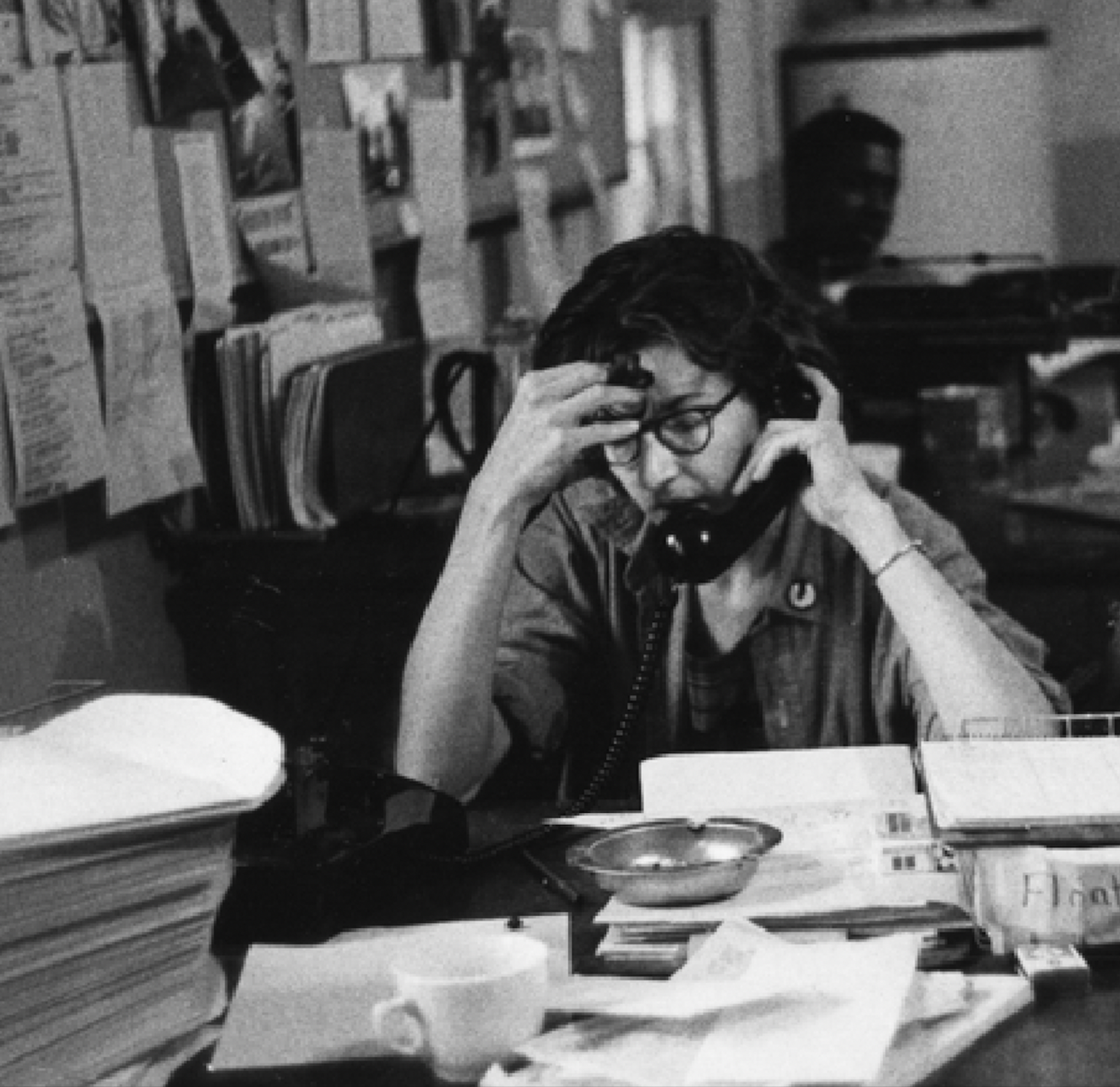By Lynn Burnett
Betty Garman Robinson was a young college student in New York when the sit-in movement was launched in 1960. She helped to organize discussion groups that brought together hundreds of White students to discuss how they could be in solidarity from the North. This experience led her to study racial justice movements as a graduate student at UC Berkeley.
After Betty formed an organization to support the Southern freedom struggle, she was put in touch with SNCC’s Executive Director, Jim Forman. In 1964, she dropped out of college and moved to Atlanta to work for SNCC full time. As the group’s official Northern Coordinator, her task was to mobilize resources and student support, from outside the South. This included being the lead organizer of the Friends of SNCC groups across the country, which served to plug people into movement news and events, and communicated the needs of the movement to people throughout the nation.
Friends of SNCC chapters could be called on to throw parties to raise bail funds, host demonstrations, or make phone calls to local legislators or radio stations to spread news or generate outside pressure. “At the height of SNCC’s work,” Betty recalled, “we could organize large coordinated demonstrations in fifty northern cities simultaneously, with only a few days notice.” Friends of SNCC played a major role in recruiting people across the country to head south and volunteer on the ground. They also saved people’s lives: the outside pressure and attention Friends of SNCC generated meant that violence against SNCC workers in the South would get national attention… something White Southern leaders tried hard to avoid.
Betty also worked to make sure that the Southern SNCC folks in the field understood the importance of the Northern work, which sometimes felt distant to them, and that the folks in the North felt valued by the movement even though they weren’t in the thick of it. Over the decades, she continued to work on a range of racial justice issues from housing to healthcare and community organizing. In recent years, she helped found SURJ Baltimore, commenting: “In the 1960s, SNCC told us to go into the white community because this is where the power lay. Sixty years later it is clearly a necessary focus for white organizers to be doing this and undermining white supremacy.”
Betty Garman Robinson passed away in October, 2020: May she rest in power.
Additional Resources
Baltimore Justice Report: We Gotta Keep Up the Fight! The Crusading Organizing Life of Betty Garman Robinson.
Civil Rights Movement Veterans: Betty’s movement family share their memories of her life.
Library of Congress: Betty Garman Robinson oral history interview conducted by Emilye Crosby in Baltimore, 2015.
SNCC Digital Gateway: (Bio includes additional resources, including interviews and primary sources.)
SNCC Legacy Project: In Memory of Betty Garman Robinson.
